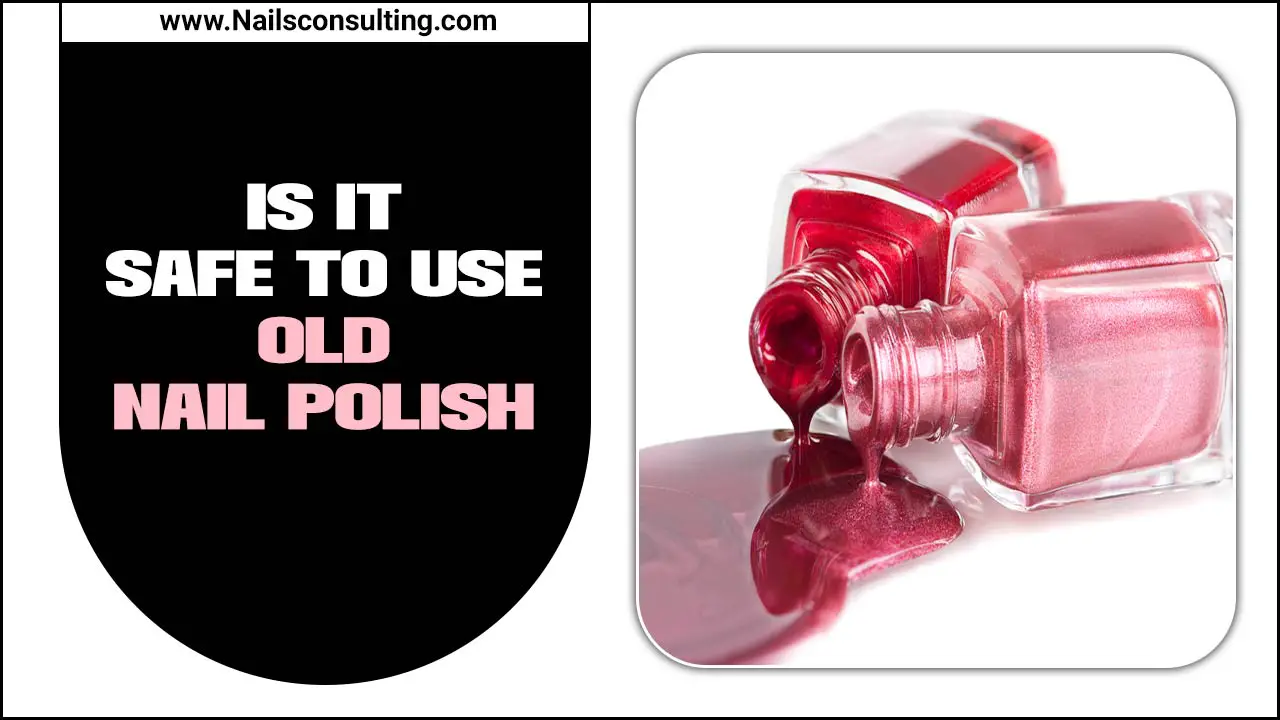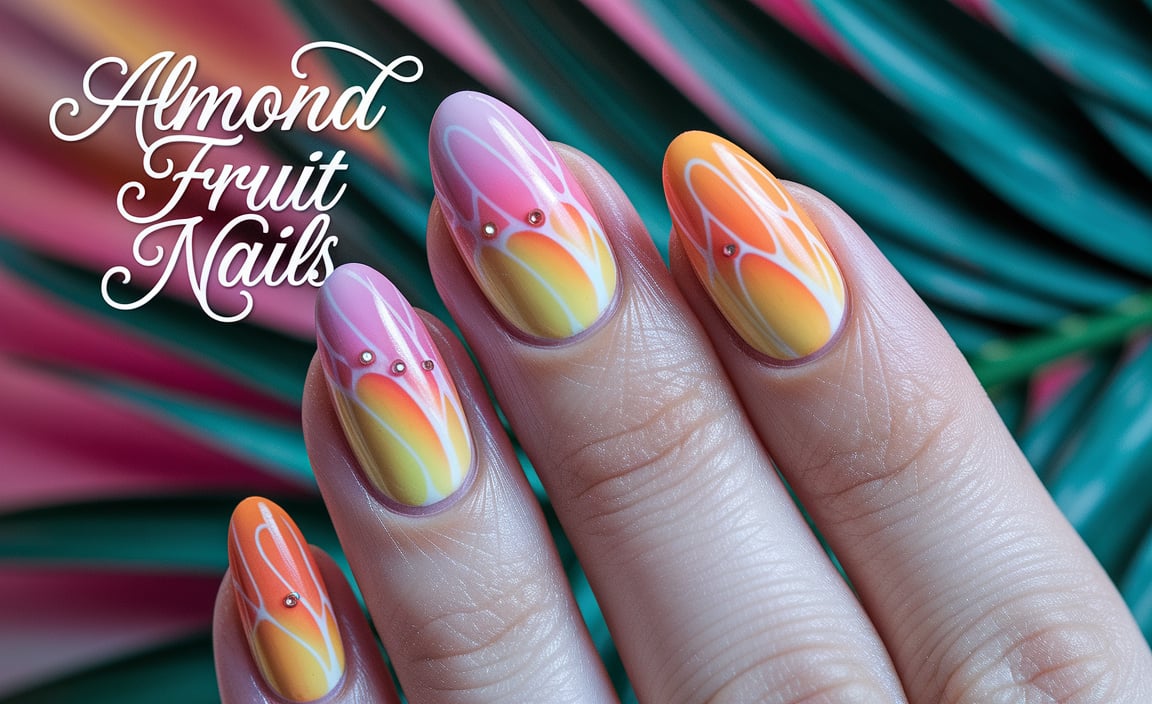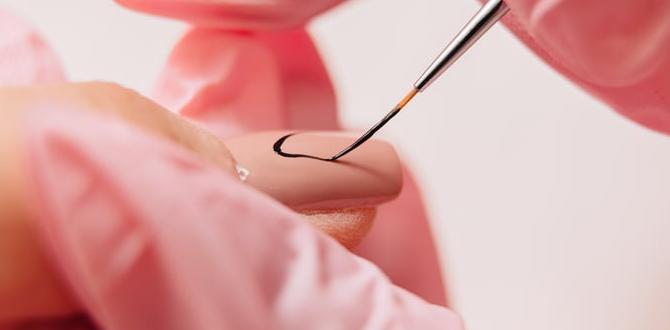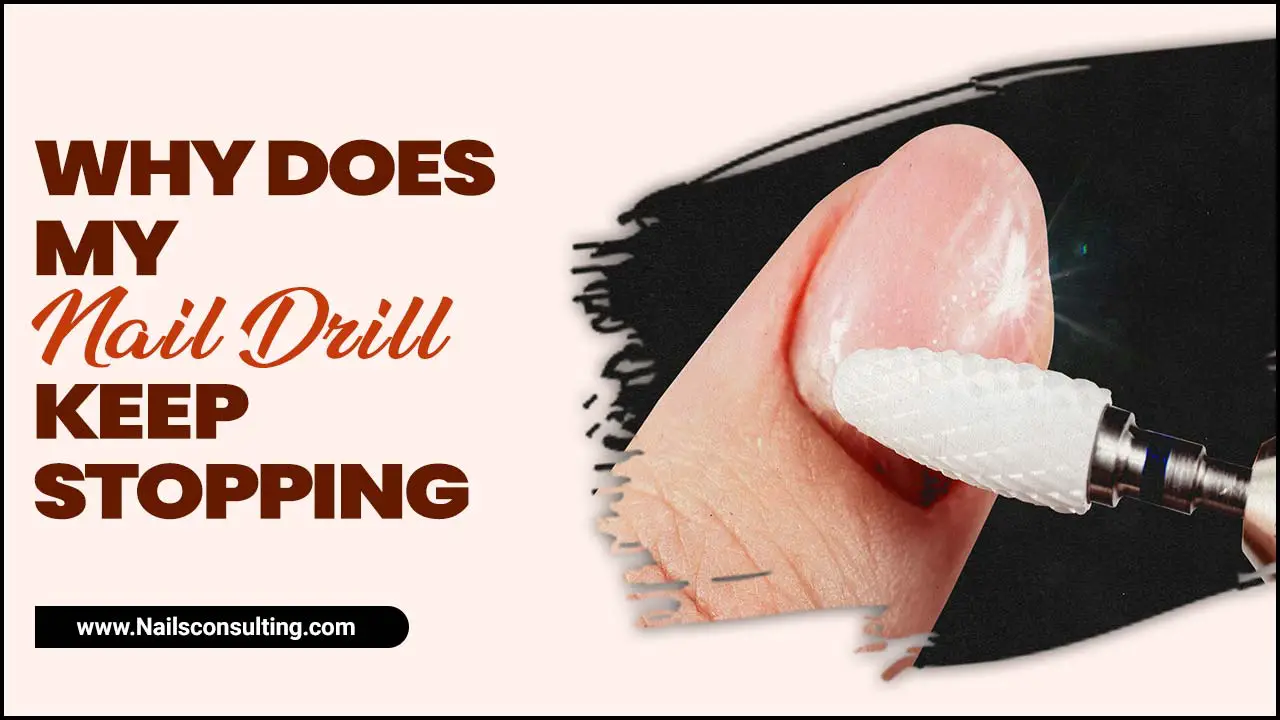Woodland nail designs offer a beautiful way to bring the tranquility and charm of nature to your fingertips. From lush greenery to woodland creatures, these looks are surprisingly easy to achieve and perfect for adding a touch of magic to any outfit.
Step outside and into nature’s wonderland with stunning woodland nail designs! Feeling a bit overwhelmed by intricate nail art? Don’t worry! Creating enchanting forest-inspired manicures is simpler than you think. Whether you love earthy tones, intricate leaf patterns, or the idea of tiny woodland critters gracing your nails, we’ve got you covered. Get ready to transform your nails into a miniature natural masterpiece, no matter your skill level. Let’s explore the magic of woodland nails together!
Why Woodland Nail Designs Are a Breath of Fresh Air
In a world of fast fashion and fleeting trends, woodland nail designs offer a refreshing connection to the natural world. They evoke feelings of peace, serenity, and a touch of whimsical escape. Who wouldn’t want to carry a little bit of the forest with them?
Nature’s Palette: Think rich greens, warm browns, earthy reds, and sky blues. These colors are universally flattering and create a sophisticated, grounded look.
Versatile Styles: From minimalist touches to full-blown forest scenes, woodland designs can be adapted to any personal style or occasion.
Therapeutic Appeal: The process of painting nature-inspired designs can be incredibly calming and meditative. It’s like a mini escape!
Conversation Starters: Unique nail art always attracts attention. Get ready for compliments!
Getting Started: Essential Tools for Your Woodland Nail Art Journey
Before we dive into the creative designs, let’s gather our essential tools. You don’t need a professional salon setup to create these looks. Many of these items are likely already in your nail polish collection!
Having the right tools makes all the difference, especially when you’re just starting out. Think of these as your trusty companions for a successful woodland manicure.
- Base Coat: This protects your natural nails and helps your polish adhere better. Look for a good quality, chip-resistant formula.
- Top Coat: Seals your design, adds shine, and prevents chipping. A quick-dry top coat is a lifesaver!
- Nail Polish Colors: Select a variety of earthy tones like forest green, moss green, deep brown, beige, cream, and maybe a soft grey or a pop of berry for accents.
- Detail Brushes: These are key for intricate designs. A fine-tip brush is perfect for drawing lines, leaves, and small details. A dotting tool is fantastic for creating tiny dots and flower centers.
- Dotting Tools: Available in various sizes, these are perfect for creating dots, berries, or simple flower petals.
- Toothpicks or Nail Art Pens: Great for beginners who want to try simpler details or for quick touch-ups.
- Tweezers: Useful for placing small embellishments like glitter or tiny rhinestones.
- Nail Polish Remover and Cotton Swabs (or a cleanup brush): Essential for correcting mistakes and cleaning up edges for a polished finish.
Don’t forget to find a well-lit space and have paper towels or an old cloth handy for any spills!
Beginner-Friendly Woodland Nail Design Ideas
Ready to get your hands (and nails!) dirty? These designs are perfect for beginners and can be adapted with your favorite colors and simple techniques.
1. The “Earthy Ombre” Effect
This design mimics the subtle gradient of the forest floor or a mossy log. It’s simple but incredibly effective.
How to Achieve It:
- Start with a clean, prepped nail. Apply a base coat and let it dry completely.
- Paint your nails with your lightest shade (e.g., a soft beige or cream). Apply two thin coats for opaque coverage.
- On a clean surface (like a makeup sponge or a piece of foil), dab a darker shade (e.g., a medium brown or deep green) next to your lightest shade.
- Gently dab the sponge onto the tip of your nail, creating a gradient. You may need to reapply polish to the sponge and repeat the dabbing motion a few times to build the effect.
- Work quickly before the polish dries.
- Clean up any excess polish around your cuticles with a cleanup brush dipped in nail polish remover.
- Once dry, apply a generous coat of top coat for a smooth, professional finish.
2. “Forest Floor” Speckle Nails
This design adds a touch of organic texture without requiring any intricate painting. It’s all about controlled messiness!
How to Achieve It:
- Apply your base coat.
- Paint your nails with a solid, earthy color like a muted green or a deep brown. Let it dry fully.
- For the speckles, you have a couple of options:
- Using a Toothpick: Dip the tip of a toothpick into a contrasting polish color (like black or dark brown). Lightly tap the toothpick onto your nail to create small speckles. Vary the pressure to get different sizes.
- Using a Brush: Dip an old, dry brush or a stiff toothbrush into a darker polish. Hold it over your nail and flick the bristles with your finger or another brush to splatter tiny dots. Be mindful of overspray!
- Continue adding speckles until you achieve the desired effect. Less is often more here; you want it to look natural, like texture.
- Allow the speckles to dry completely before applying a top coat.
3. Simple Leaf Outline
This minimalist design is chic and instantly evokes a woodland feel.
How to Achieve It:
- Start with a nude, cream, or light green base color. Apply two coats and let them dry thoroughly.
- Using a fine-tip nail art brush and a darker contrasting color (like deep green, brown, or even black), carefully draw a simple leaf outline on one or two accent nails. You can create individual leaves or a small cluster. Freehand is fine, or you can find simple leaf stencils online for inspiration.
- For a more detailed look, you can add a single vein line down the center of the leaf outline.
- Clean up any mistakes with a precision cleanup brush.
- Finish with a high-shine top coat.
4. “Mushroom Cap” Accents
These are adorable and surprisingly easy to do! They add a playful, whimsical touch.
How to Achieve It:
- Paint your nails in a natural, earthy tone like a peachy nude, light brown, or even a soft grey.
- On your accent nail (often the ring finger), use a dotting tool or the rounded end of a toothpick to create a semi-circle or dome shape using red or brown polish.
- While the dome polish is still wet, use a toothpick or detail brush to add small white or cream dots on top of the “cap” to mimic mushroom spots.
- Once dry, carefully paint a simple stem shape underneath the mushroom cap, extending it towards your cuticle.
- Alternatively, if you prefer not to paint the stem, you can simply paint a dome and add dots on an accent nail painted with a solid color. This gives the impression of a mushroom cap.
- Seal the design with a top coat.
Intermediate Woodland Nail Designs
Ready to take your woodland nail art to the next level? These designs incorporate a bit more detail but are still very achievable with a little practice.
5. The “Bark Texture” Nail
This design mimics the natural texture of tree bark for an authentic woodland feel.
How to Achieve It:
- Apply a dark brown or grey base coat. Let it dry completely.
- On a clean palette (like a nail art mat or foil), add a few drops of a lighter brown or beige polish.
- Using a dry, stiff nail art brush or even a clean makeup sponge, lightly dab into the lighter polish and then blot most of it off onto a paper towel.
- With the remaining very light polish on your brush/sponge, gently dab and lightly brush across your dark base color nails. You want to create irregular lines and textures that resemble bark.
- Build up the texture gradually. It’s better to do several light applications than one heavy one that might look too uniform.
- Let it dry thoroughly and seal with a matte top coat for an even more realistic bark-like finish, or a glossy top coat for a damp forest look.
6. Miniature Woodland Creatures
Who can resist tiny foxes, deer, or hedgehogs on their nails? These are sure to bring smiles!
How to Achieve It (Example: Simple Fox):
- Paint your nails with a warm, neutral background color like cream or light beige.
- On your accent nail, use a detail brush and orange polish to paint a rounded triangle shape for the fox’s body.
- Add a small triangular head and two pointy ears.
- Use a small amount of white polish and a fine brush to add a touch of white to the tip of the tail and the chest area.
- Use black polish and a very fine brush or dotting tool to add tiny eyes and a nose.
- Carefully outline the ears with black polish if desired.
- Allow to dry completely and seal with a durable top coat.
Pro Tip: For even simpler creature designs, you can use nail art stickers or hand-painted decals. These are pre-made designs that you simply apply to your nail and seal with a top coat.
7. Pinecone and Acorn Accents
These little details add a special touch to your woodland theme.
How to Achieve It (Acorn):
- Start with an earthy base color.
- On your accent nail, use a detail brush and brown polish to paint a teardrop shape.
- Use a lighter brown or beige polish to create a small, textured “cap” on top of the teardrop. You can do this by dabbing with a toothpick or dry brushing.
- Add a tiny highlight or a small dot to the cap if you like.
- Seal with a top coat.
How to Achieve It (Pinecone):
- Use a medium brown polish on an accent nail.
- With a detail brush and a slightly darker brown, paint small, overlapping curved lines starting from the cuticle and moving upwards. Each line represents a scale of the pinecone.
- Add lighter brown or beige highlights to give the pinecone dimension.
- Seal with a top coat.
Advanced Woodland Nail Art Techniques
If you’re feeling confident and ready for a challenge, these techniques can elevate your woodland nails to breathtaking levels.
8. Detailed Forest Scene
This involves painting a miniature landscape on your nails.
How to Achieve It:
- Background: Start with a muted blue or grey sky gradient, or a deep green/brown base for the forest floor.
- Trees: Using a fine-tip brush and brown or black polish, paint simple tree trunks and branches. You can create silhouettes of pine trees or deciduous trees.
- Foliage: Add dabs of green and yellow polish to create leaves and bushes. You can use a stippling technique with a brush or sponge for soft effects.
- Details: Add tiny mushrooms, a crescent moon, or subtle animal silhouettes.
- Depth: Use slightly darker shades for elements further back and lighter shades for those in the foreground to create an illusion of depth.
- This requires patience and a steady hand. Practice on paper first!
9. Watercolor Woodland Effects
This technique uses diluted polishes to create soft, ethereal washes of color.
How to Achieve It:
- Paint your nails with a solid white or nude base coat.
- On a palette, mix a few drops of green, brown, or even soft blue polish with a clear top coat or alcohol to create a diluted “watercolor” effect.
- Using a fine brush, apply these diluted colors to your nails in abstract washes and layers. Let each layer dry slightly before applying the next to build depth.
- Once the watercolor effect is dry, you can add simple details like leaf outlines or tiny animal silhouettes with a fine brush and opaque polish.
- Seal with a clear top coat.
10. Incorporating Natural Elements (Glitters and Charms)
For a touch of extra sparkle and dimension.
How to Achieve It:
- Glitter: Use fine-tipped green, gold, or brown glitters to mimic dew drops, dappled sunlight, or starry night skies over your forest scene. Chunky glitters can represent fallen leaves or moss.
- Charms: Small 3D charms like miniature leaves, acorns, or even tiny animal shapes can be adhered to your nails using nail glue or a strong top coat. Place them strategically on accent nails.
- Dried Flowers/Leaves: Tiny, real pressed flowers or leaves can be carefully encapsulated in a thick gel or acrylic overlay, or secured with strong nail glue and sealed with multiple layers of top coat. This is more advanced but offers a truly authentic woodland look. (Ensure these are sterilized if using real botanicals.)
Caring for Your Woodland Nails
Once your woodland masterpiece is complete, a little care will ensure it lasts.
- Avoid Harsh Chemicals: Wear gloves when doing chores like washing dishes to protect your polish from harsh detergents.
- Moisturize: Keep your cuticles and skin hydrated with cuticle oil. Healthy cuticles make your entire manicure look better.
- Gentle Filing: If you need to shape your nails, always file in one direction to avoid weakening the polish.
- Reapply Top Coat: Every few days, a fresh layer of top coat can refresh the shine and add extra protection, especially on nails that see a lot of action.
Tips and Tricks for Perfect Woodland Nails
Practice Makes Perfect: Don’t get discouraged if your first attempt isn’t flawless. Use a nail art mat or even paper to practice your designs before applying them to your nails.
Clean Up is Key: A small, stiff brush dipped in nail polish remover is your best friend for cleaning up jagged lines and messy edges. This step makes a huge difference in the final look.
Layering is Your Friend: Build up colors and textures slowly. It’s easier to add more than to take away!
Reference Photos: Keep a picture of the design you’re trying to replicate handy.
Embrace Imperfection: Nature isn’t perfectly uniform. A slightly “imperfect” detail can often make a design look more organic and authentic.
Consider Accent Nails: You don’t need to do complex designs on every single nail. One or two accent nails can make a big impact.
Common Questions About Woodland Nail Designs
Q1: Do I need special brushes for woodland nail designs?
A1: While specialized nail art brushes make intricate designs easier, you can start with basic dotting tools, toothpicks, and even a fine-tipped pen if you’re on a budget. The key is a steady hand!
Q2: How long do DIY woodland nail designs typically last?
A2: With a good base and top coat, and proper care, DIY manicures can last anywhere from 3-7 days without chipping. Using a high-quality top coat and reapplying it every few days can extend their life.
Q3: Can I do these designs if I have short nails?
A3: Absolutely! Woodland designs are very adaptable. Smaller, more minimalist designs like single leaves, subtle textures, or tiny mushrooms work beautifully on short nails. Ombre and speckle effects are also fantastic on shorter lengths.
Q4: What are the best colors for woodland nail designs?
A4: The most popular colors include various shades of green (forest green, moss, olive), browns (chocolate, tan, beige), and earthy tones like terracotta, muted reds, and creams. Don’t be afraid to add pops of color like berry or a soft sky blue.
Q5: How do I remove intricate nail art without damaging my nails?
A5: Soak a cotton ball or pad in nail polish remover, press it onto your nail, and hold for about 30 seconds to a minute. Then, gently wipe away the polish. For glitter or stubborn polish, consider using foil wraps (soak the cotton, place on nail, wrap with foil) for about 5-10 minutes.
Q6: Where can I find inspiration for more woodland nail designs?
A6: Pinterest and Instagram are amazing resources! Search for hashtags like #woodlandnails, #naturenails, #forestnails, or #animalnailart. You can also look at nature photography, forest illustrations, and even fairy tale art for ideas.
Q7: Is it okay to mix different woodland design elements on one person’s hands?
A7: Of course! The beauty of nail art is self-expression. You can mix and match patterns,





